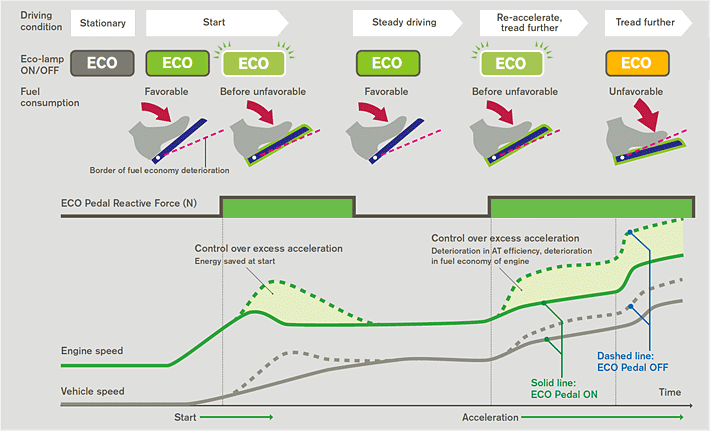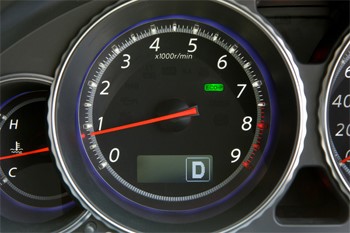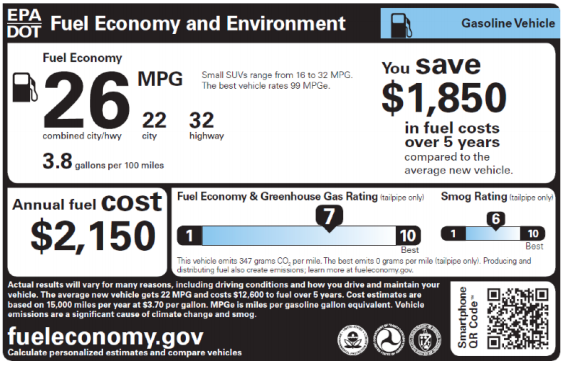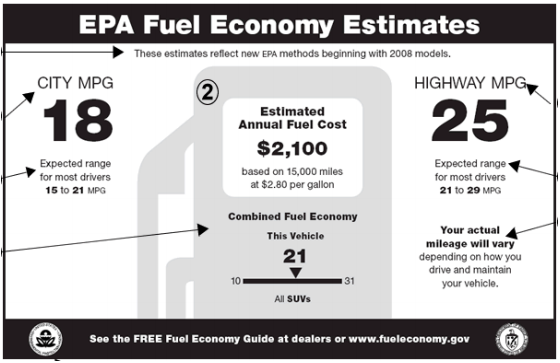Climate change is one of the most pressing issues in our society today.
To reduce and minimise the devastating losses and impacts of global warming we need to act now. A report published in 2017 stated that we need to “reduce net greenhouse gas emissions to zero well before 2040 in order to ensure global warming does not go above 1.5 degrees Celsius by the end of the century.”
A significant part of this action needs to come from reducing our individual carbon footprints.
A recent study by the Norwegian University of Science and Technology analysed household carbon emissions for all regions across the EU27. The UK emerged as one of the worst emitters, on a par with Luxembourg. Across the whole EU region, transport was one of the biggest contributing sectors.
Researchers found that transport makes up around 30% of EU household emissions, and in some regions as much as 44%, with most of the impact coming from the burning of transport fuel.
A separate piece of research, published last month by researchers in Sweden and Canada, analysed 39 existing peer reviewed studies to identify which behaviours make most impact on reducing our carbon footprint. Reducing car and air travel featured in the top 5.
Therefore, effective initiatives that help us to reduce our individual transport emissions and change our behaviour are incredibly valuable, and may also help to inspire other initiatives. Those inspired by behavioural science are now starting to contribute to the solutions on offer. Whilst early in its evolution behavioural science was more often applied to areas such as tax completion, payment of fines, financial management, littering and other small nudges, the field is rapidly advancing to help contribute to tackling weightier societal issues. This includes initiatives and experiments to help us live in more sustainable ways and reduce our carbon footprint.
This article highlights the broad range of very different initiatives, all of them grounded in behavioural science, which all have the ultimate outcome of reducing fuel consumption.
Real time driver feedback can increase fuel efficiency

One approach to reduce our carbon footprints is to minimise fuel consumption by driving more efficiently. The Energy Saving Trust - a UK organisation designed to help people save energy - has set up the Fuel Good scheme to teach and give feedback to drivers to show how driving more economically really does make a difference to fuel consumption. They provide free one-to-one training sessions to show people how small changes such as not revving the car to more than 2500rpm (for a petrol car, 2000 for diesel) but rather moving up the gears quickly, turning the engine off when stationary, and driving smoothly - assessing the road far in front to minimise acceleration and braking - can make a substantial difference.
One key part of the training is receiving personal feedback on fuel consumption. Behavioural scientists have found that real time and personalised feedback can motivate people and increase their engagement. So training that lets people see the difference more economical driving can make can help to encourage a change in behaviour and driving habits. At the start of the FuelGood training session, the driver makes a usual journey and drives as they would normally. The instructor makes a note of the fuel consumption for that journey and then asks the driver to make that same journey again, but this time using fuel efficient driving techniques such as those described above. At the end of the second journey the instructors then deliver feedback to show the difference in fuel consumption, usually an improvement of almost 15% mpg on the day of training and a maintained improvement of 1-6%.
The Energy Saving Trust has now trained over 12,500 drivers and the impacts have sometimes been impressive; for example Fife Council in Scotland saved over £189,000 on its annual fuel spend of £1.46 million in 2016.
 Another example of leveraging feedback to encourage changes in driving style comes from new technology. A few years ago Nissan developed a more automated type of feedback mechanism to nudge and change driver habits for good. Their ECO Pedal controls ‘heavy-footed’ drivers via a mechanism within the pedal that gives resistance when too much pressure is applied, such as foot-to-the-floor acceleration. Such in-the-moment feedback lets the driver know that they could be driving more efficiently, although drivers can opt to bypass it.
Another example of leveraging feedback to encourage changes in driving style comes from new technology. A few years ago Nissan developed a more automated type of feedback mechanism to nudge and change driver habits for good. Their ECO Pedal controls ‘heavy-footed’ drivers via a mechanism within the pedal that gives resistance when too much pressure is applied, such as foot-to-the-floor acceleration. Such in-the-moment feedback lets the driver know that they could be driving more efficiently, although drivers can opt to bypass it.
The pedal works by analysing real-time data on the current rate of fuel consumption and transmission efficiency while the car is accelerating and cruising. It then calculates the optimal acceleration rate. If the driver exerts too much pressure on the accelerator, the system counteracts with the pedal push-back control mechanism.
 The driver also receives visual feedback through the colour and flashing of a light on the dashboard. While driving within the optimal fuel consumption range, the indicator is green. It begins to flash when it detects increased acceleration before reaching the fuel consumption threshold and finally turns amber to advise the driver of the negative impact of their driving behaviour on fuel consumption. Analysis by Nissan found that the pedal can improve fuel efficiency by 5 to 10% depending on driving conditions. Whilst this feels like a small impact, if every driver achieved this, it would make a significant difference.
The driver also receives visual feedback through the colour and flashing of a light on the dashboard. While driving within the optimal fuel consumption range, the indicator is green. It begins to flash when it detects increased acceleration before reaching the fuel consumption threshold and finally turns amber to advise the driver of the negative impact of their driving behaviour on fuel consumption. Analysis by Nissan found that the pedal can improve fuel efficiency by 5 to 10% depending on driving conditions. Whilst this feels like a small impact, if every driver achieved this, it would make a significant difference.
Perhaps even better is the Dash app which provides drivers with real-time feedback on fuel efficiency on a journey, enabling people to track their mpg in real time, and then highlighting parts of the journey where their driving could have been better and providing a journey score based on how economically they drove, giving them a (competitive) benchmark to anchor to the next time they drive.
This kind of feedback might be further strengthened if it was presented in a way that kept the primary goals - reducing carbon emissions, or even fuel cost for those more money than environment motivated - top of mind.
Impact of mpg data at point of sale

Yet driving more efficiently can only get us so far. Our choice of car is also an important route to reducing our carbon footprints - with some models, particularly newer ones, being highly fuel efficient and achieving a real mpg of around 65 and others, such as some large SUVs barely achieving a real mpg of 20.
However, buying a new car can be a complex decision, and has only become more so in recent years as fuel efficiency and CO2 emissions information has been added to the more traditional attributes and qualities such as power and style. Comparing these now numerous attributes is a difficult process and certainly difficult for the ordinary driver to carry out with full confidence. For example, people may want to purchase a car with low CO2 emissions but are unsure of what a ‘good’ or ‘bad’ emission level is for the cars currently on the market.
Other sectors, such as for household appliances have tried to tackle this problem by reframing the cost of a new appliance over its lifetime, helping to refocus consumers’ attention away from the sales price to consider the overall energy running costs over the typical lifetime of the appliance.
The same approach has been introduced in the US to help drivers decide which car to buy. In 2013 the US Department of Transport and Environmental Protection Agency designed new fuel economy labels to allow easier comparison of attributes. These labels must be fixed to the side window of all new vehicles for sale at dealerships. The new labels include a scale from 1 to 10 for fuel economy and greenhouse gas rating which is linear in CO2 reduction. Consumers do not need to do the calculations themselves but can instead rely on the rating as a shortcut.


Figure 1: Old and new EPA labels in the US - on the left, a 2008 Fuel Economy label, on the right, the new 2013 label
The new label also features other helpful figures including both the mpg and gpm (gallons per 100 miles which consumers often find a more useful metric), an estimate of annual fuel cost and how that cost compares to the annual fuel cost for an average new vehicle. This means that consumers can also see the personal cost saving of a car as well as its environmental performance. For many, cost is still of greater importance than a car’s emissions so the EPA have tried to harness both aspects to ensure the label information has a broad appeal.
The new labels help to make the annual fuel cost of the car and emissions ratings more salient and easier to compare. Any car buyer can now compare cars against each other across these parameters. The extremes of the emissions scale (10=best) also provide clear reference points.
So what impact have the new labels had? New analysis from Yann Panassie, an economist at the University of California, suggest that they have had a positive impact on people’s choice of car.
By analysing car sale data in the US and Canada between 2009 and 2015, he found that since 2013 there has been a 1.5% increase in small car market share, together with a corresponding fall in SUV market share.
Whilst the data are only suggestive, with further research needed, these results imply that the adjustments to the labelling have had a worthwhile impact on car purchase behaviour, leading to a sustained reduction in annual fuel consumption among car drivers of new vehicles and ultimately their carbon footprint.
Concluding thoughts

These examples illustrate how simple tweaks to existing systems can help to change behaviour for the better and reduce our travel emissions.
Real-time personalised feedback may be able to motivate us to change our driving habits to be more fuel efficient, whilst how we present fuel efficiency information can help to keep that motivation high or encourage us to make more environmentally sound car purchases.
Maybe carbon footprint aware driving skills should even be made part of everyone’s driving test untill those fully automated electric cars arrive?
How BE is transforming our lives 24/7 series - article 6
Behavioural economics (BE) is still a buzzword in many sectors, even after breaking into mainstream thinking several years ago and making a significant difference to our everyday lives.
In something of a salute to this, we are running a series of articles over the next 12 months to take our readers on a 360 degree tour of how behavioural science is transforming our lives 24/7; how it is shaping better outcomes for us, enhancing communications, increasing our engagement and response rates and making us healthier and better off.
Each part of the series will zoom in on a particular area or sector.
Sources
- https://www.independent.co.uk/environment/world-zero-carbon-emissions-before-2040-two-decades-climate-change-global-warming-greenhouse-gases-a7682001.html
- http://iopscience.iop.org/article/10.1088/1748-9326/aa6da9#erlaa6da9f2
- https://www.sciencealert.com/here-are-the-best-ways-to-actually-reduce-your-carbon-footprint-according-to-science
- http://www.energysavingtrust.org.uk/scotland/businesses-organisations/transport/fuelgood-driver-training
- http://apse.org.uk/apse/assets/File/Matthew%20Eastwood.pdf
- https://www.pressreader.com/uk/the-courier-advertiser-fife-edition/20170111/281573765382958; https://www.kingdomfm.co.uk/news/local-news/driver-efficiency-course-saves-council-thousands-on-fuel/
- https://www.slashgear.com/nissan-reveals-fuel-efficient-eco-pedal-system-24116170/
- http://www.nissan-global.com/EN/TECHNOLOGY/OVERVIEW/eco_pedal.html
- https://dashlabs.zendesk.com/hc/en-us/articles/204630530-How-does-Dash-calculate-fuel-efficiency-; https://dash.by/
- http://econweb.ucsd.edu/~ypanassi/pdfs/2013labels.pdf



